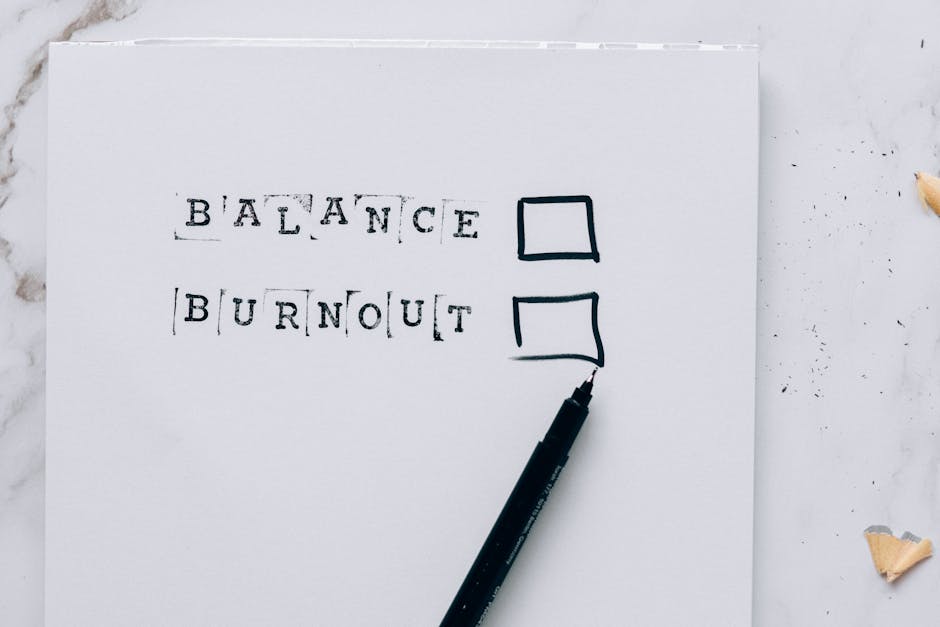How to Balance Work and Wellness: A Comprehensive Guide
Many of us find ourselves juggling the demands of work and personal well-being on a daily basis. The constant pressure to excel in our careers often leads to neglecting our physical and mental health. However, striking a balance between work and wellness is crucial for long-term success and happiness. In this article, we will delve into the intricacies of managing work-life balance effectively, exploring various strategies, tips, and techniques to help you lead a harmonious life.
The Impact of Work on Wellness

Before we dive into the practical aspects of balancing work and wellness, it’s essential to understand the profound impact that work can have on our overall well-being. Studies have shown that workplace stress can lead to a host of health issues, including high blood pressure, anxiety, depression, and even heart disease. Long hours, tight deadlines, and a lack of work-life balance can take a toll on both our physical and mental health.
Moreover, neglecting our wellness in favor of work can lead to burnout, a state of chronic stress that can have severe consequences on our productivity and quality of life. It’s crucial to recognize the signs of burnout early on and take proactive steps to address them.
Setting Boundaries

One of the key strategies for balancing work and wellness is setting clear boundaries between work and personal life. This means establishing specific work hours and sticking to them, avoiding the temptation to check emails or take work calls outside of designated times. Creating a separate workspace at home, if possible, can also help delineate between work and leisure time.
Setting boundaries also involves learning to say no to additional work or responsibilities that can encroach on your personal time. It’s essential to prioritize your well-being and recognize that it’s okay to put yourself first.
Time Management Techniques

Effective time management is crucial for maintaining a healthy work-life balance. Utilizing tools such as to-do lists, calendars, and time tracking apps can help you prioritize tasks, set realistic goals, and allocate time for both work and personal activities.
One popular time management technique is the Pomodoro Technique, which involves working in focused intervals (usually 25 minutes) followed by short breaks. This method can help improve productivity and prevent burnout by allowing for regular rest periods.
Physical Well-being

Physical well-being is an integral part of maintaining a healthy work-life balance. Regular exercise, proper nutrition, and sufficient sleep are essential for overall wellness. Incorporating physical activity into your daily routine, even if it’s just a short walk or stretching break, can help reduce stress and improve your mood.
Eating a balanced diet rich in fruits, vegetables, and whole grains can provide the energy you need to tackle work challenges effectively. Additionally, getting an adequate amount of sleep each night is crucial for cognitive function and emotional well-being.
Mental Health and Self-Care
Self-care is often overlooked in the pursuit of professional success, but it’s essential for maintaining mental health and well-being. Engaging in activities that bring you joy and relaxation, such as reading, meditating, or spending time with loved ones, can help reduce stress and improve your overall mood.
If you’re struggling with your mental health, don’t hesitate to seek professional help. Therapy, counseling, or support groups can provide valuable resources for managing stress, anxiety, and other mental health issues.
Workplace Wellness Programs
Many companies offer workplace wellness programs designed to support employees in achieving a healthy work-life balance. These programs may include fitness classes, mental health resources, stress management workshops, and flexible work arrangements.
If your workplace offers wellness initiatives, take advantage of them to prioritize your well-being. Participating in wellness activities can improve your physical and mental health, boost morale, and foster a sense of community among colleagues.
Personal Reflection and Goal-Setting
Regularly reflecting on your work-life balance and setting goals for improvement is crucial for long-term success. Take time to evaluate your current habits and routines, identifying areas where you can make positive changes to prioritize your well-being.
Setting SMART goals (specific, measurable, achievable, relevant, and time-bound) related to work-life balance can help you stay accountable and track your progress. Whether it’s carving out more time for self-care, reducing work hours, or delegating tasks, setting clear objectives can guide you towards a healthier balance.
Common Misconceptions
One common misconception about balancing work and wellness is that it requires sacrificing career success. In reality, prioritizing your well-being can actually improve your performance at work by enhancing your focus, creativity, and resilience.
Another misconception is that achieving work-life balance is a one-time accomplishment. In reality, work-life balance is a dynamic and ongoing process that requires regular attention and adjustment as your circumstances change.
Conclusion
In conclusion, balancing work and wellness is essential for leading a fulfilling and sustainable life. By setting boundaries, practicing effective time management, prioritizing physical and mental well-being, and engaging in self-care activities, you can achieve a harmonious work-life balance that promotes success and happiness.
Remember that work-life balance is a personal journey, and what works for one person may not work for another. Experiment with different strategies, seek support from colleagues and loved ones, and don’t be afraid to make changes as needed to prioritize your well-being.
To wrap things up, remember that finding the right balance between work and wellness is an ongoing process that requires diligence and self-awareness. By making your well-being a priority, you can create a more fulfilling and rewarding life both personally and professionally.




